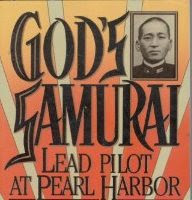In East Asia, 2013 is the Year of
the Snake, although in China and those countries that still follow Chinese
customs the new year doesn’t begin until February 10. While in the West a snake
usually conjures up bad images and is sometimes a symbol of evil, that is not
the case in East Asia.
In several ancient cultures, snake
worship was a common practice, and the ancient Egyptians saw the snake as a
symbol of wisdom. Similarly, to the Chinese of the past and many of the present
the snake is a symbol of good fortune.
Still, the snake is my least-liked
of the twelve Asian zodiac symbols. I have never liked snakes of any kind
anywhere.
In the English-speaking world, “a
snake in the grass” is an idiom used for “a sneaky and despised person.” And “killing
snakes” is a metaphor sometimes used to describe energetic effort in getting
something done; usually it means going overboard, being a bit overzealous. In
these and other western expressions, snakes are seen negatively.
In its first edition of the year, The Economist magazine wrote, “So in Tokyo it is already the year of the
snake. In the East these animals are associated with good fortune. Japan’s
politics being what it is these days, the western meaning may be more suitable.”
That was in written in 1989, two
cycles ago; some things don’t change much! (I don’t have many positive feelings
toward the new Prime Minister of Japan who was elected earlier this month.)
But it is true, in East Asia the snake
is a symbol of good fortune, and those born in the Year of the Snake (for example,
those born in 1941, 1953, 1965) are usually kind, vibrant,
introspective, and refined—or so it is said.
So this is a
special year for people born in those years (and there may even be some readers
who were born in 1929). I hope it will be an extraordinary year for all of you
born in the Year of the Snake, even if you don’t live in Japan or China.
Who knows, though, what will happen
in our world, on in our personal lives, between now and the beginning of next
year, the Year of the Horse. Some of you reading this may no longer be here
next year—and neither may the one writing this. (My daughter Kathy’s
father-in-law suddenly passed away last week—just three days after they saw him
“hale and hearty” in Louisville; he was several years older than I, but still .
. .)
So perhaps the beginning of the new
year is a good time to recall, and to pray, the words of the 1974 hit song that
contains these important words,
Yesterday’s gone, Sweet Jesus,And tomorrow may never be mine.Lord, help me today,Show me the way,One day at a time.
I pray that you will, indeed, have a
happy new year, one day at a time.




.jpg)


